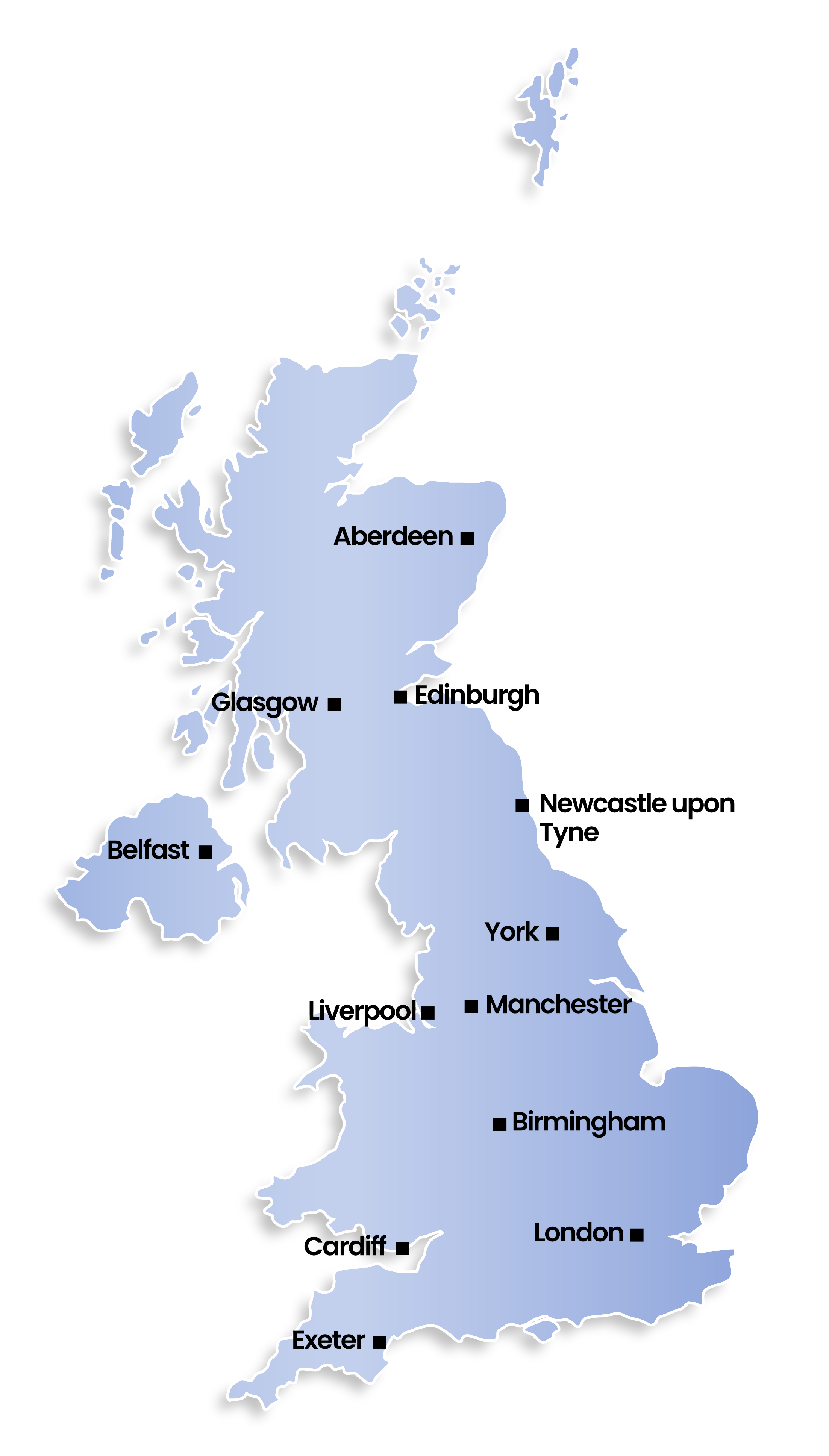
Oldham
Oldham Greater Manchester in the afternoon sun

Oldham (OL) Postcode Area
Oldham: Industrial heritage, picturesque Pennine landscapes, vibrant market town, cultural diversity, and a strong community spirit. A town with a rich history and a proud identity in Greater Manchester.
Oldham Postcode Area includes:
Oldham, Ashton Under Lyne, Heywood, Rochdale, Bacup, Todmorden, Littleborough.
Discover everything you need to know about Oldham with PostcodeArea. Scroll down to uncover demographics, property prices, crime stats, amenities and more.
Most Desirable Postcodes
Here are the top 10 most desirable postcode areas in Oldham (OL), based on a unique scoring system that weighs key factors like safety, schools, diversity, and affordability.
Whether you're a renter, homebuyer, or property investor, this tool lets you customise the score to focus on what matters most to you, helping you make smarter, data-driven decisions.
How are Desirability Scores calculated?
Our custom algorithm calculates a unique "Desirability Score" for any UK postcode by analysing a range of factors - including Census 2021 data, third-party insights, and socio-economic knowledge, to provide a tailored rating.
Explain more
Primary Industries
Curious about the local business scene? These are the top four industries shaping Oldham, from thriving services to key local employers.
Professional & Scientific
Oldham has a large proportion of professional and scientific businesses, which makes it a hub for specialised industries like law firms, consulting agencies, tech companies, or research labs. This suggests a high level of expertise and innovation, attracting professionals such as engineers, scientists, lawyers, and consultants. The Oldham area might have a more polished, business-focused atmosphere, with modern offices and co-working spaces. It's often well-connected, with good transport links and amenities to support a skilled workforce. Property prices could be higher, as these areas tend to attract well-paid professionals. It might not be the most vibrant or social place, but it will have a reputation for being smart, efficient, and future-focused.
Construction
Oldham has a strong presence of construction businesses, which usually means there's a lot of building going on - whether it's new homes, commercial spaces, or infrastructure. This can be a good sign that the Oldham area is growing and attracting investment. It could also mean there's a strong local economy, with plenty of work available for builders and tradespeople. On the flip side, it might suggest there's a fair bit of property in need of repair or updating. Either way, it tells you the Oldham area is pretty active and could be on the up.
Retail
Oldham area has a large quantity of retail businesses, making it a busy, commercial hub where people go to shop and socialise. High streets, shopping centres, and independent boutiques often thrive in these areas, making it a convenient place for residents and visitors alike. The presence of retail businesses can indicate that the local economy is fairly strong, with plenty of footfall and a demand for goods and services. This kind of area tends to have good transport links and a lively atmosphere, but it can also mean a bit more hustle and bustle, especially during weekends and sales events. If you're living in Oldham, it's handy for convenience, but it could also bring a lot of traffic and noise during peak shopping hours.
Business Administration
If a postcode area such as OL has a lot of business administration services, such as accounting firms, HR consultancies, and management services, it's likely a centre for corporate and operational support. These businesses help other companies run smoothly, so the area might be more business-centric, attracting professionals like administrators, accountants, and consultants. The local economy could be quite strong, driven by a steady demand for services that keep companies ticking over. It's not necessarily the most exciting or creative environment, but it would be efficient, organised, and perhaps well-connected with reliable transport links. You'd expect to see a lot of office spaces in Oldham and maybe even shared workspaces catering to small and medium-sized businesses. The area could feel more formal and professional, with less of a residential or leisure focus.
Data showing the activity, size and location is from the Inter Departmental Business Register 2024, produced by the ONS.
Key Statistics
Oldham OL, part of the ceremonial county of Greater Manchester in England, presents a substantial geographical area with 16 outward codes (the first half of a postcode, e.g. OL 1AA). Its population stands at 493,584 individuals, reflecting a density of 3,021 people per square kilometre. The average household income here is £38,359 , a difference of 9.6%, which is in line with the average median UK household income of £35,000.
Postcode Area
Oldham
Total Outward Codes
Postcodes
Population
People
Population Density
People/km2
Average Income
Per household
What's Oldham like to live and work in?

Oldham Greater Manchester in the afternoon sun
Adobe Stock
Oldham, located in Greater Manchester, is a town rich in industrial heritage and community spirit. Within the OL postcode area, Oldham is home to approximately 230,000 residents. Known for its role in the textile industry during the Industrial Revolution, the town features landmarks like the historic Oldham Parish Church and Gallery Oldham.
The economy today is supported by education, healthcare, and manufacturing. Excellent transport links, including the M60 motorway and Metrolink tram services, provide easy access to Manchester and beyond.
This page contains a list of postcode districts for Oldham area. Select a postcode to see the map location, demographics, house prices, local information, tourist guides and statistics:
Oldham (OL) Postcode Districts
House Prices in Oldham
How are property price trends?
The ONS (Office for National Statistics) regularly tracks and records average house prices and rents in this area (E08000004). Note that these estimates are based on local authority rather than postcode area. For more information about current house prices, choose an individual postcode below.
Greater Manchester
The wider county
Far more than the (admittedly great) Manchester city at its heart, Greater Manchester could stake a good claim to be the most fascinating region in the north west. It is a metropolitan county with a population of over 2.7 million and is one of the largest metropolitan areas in Britain, made up of Wigan, Trafford, Tameside, Stockport, Rochdale, Oldham, Bury and Bolton.
Spanning 496 square miles it is bordered by Merseyside to the west, Lancashire to the north, Yorkshire to the northeast, Derbyshire to the south-east and Cheshire to the south.
Read more about Greater Manchester
Local Transport
Transport in the OL Postal Area
The OL postal area, encompassing Oldham and its surroundings, offers a well-rounded mix of transport options. For rail travel, the area is serviced by several stations, including Greenfield, which connects you to Manchester and Leeds. Commuting by car is straightforward with the M60 and M62 motorways providing quick routes to Manchester and beyond.
If you prefer buses, you'll find frequent services running through Oldham and neighbouring towns, making it easy to get around locally without a car. For international travel, Manchester Airport is under an hour away, offering flights to a multitude of destinations.
Train Stations
The following railway stations are within the OL postcode region:
Local Authorities
OL Postcode area
Local Authorities are government organisations responsible for providing local services and facilities such as education, housing, and social services within a specific area. The OL postcode area includes the following local authorities:
Burnley
Burnley Council actively supports local economic development and urban regeneration. It provides a range of services aimed at revitalizing the town centre and supporting the community through enhanced public amenities and housing initiatives.
Calderdale
Calderdale Council focuses on sustainable growth and community welfare, promoting initiatives that enhance local services, environmental sustainability, and economic resilience in towns like Halifax and Hebden Bridge.
Manchester
Manchester City Council leads in fostering a vibrant urban environment with an emphasis on innovation, cultural diversity, and economic growth. The council’s policies aim to enhance city living through continuous development of public services and infrastructure.
GDP (Gross Domestic Product)
Economic Output
GDP (Gross Domestic Product) measures the total economic output of a country, region, or Local Authority. It tells us how much money is being made within a particular area. This includes everything from a business selling cars or consumers getting their hair cut.
This list of the Local Authorities within the Oldham (OL) postcode town gives us a snapshot of how much money is being generated at current market prices, based on what people are spending and earning. It's an important way to understand the economic health and activity levels across the UK.
For comparison purposes, we've included the top and bottom two local authorities across the UK in terms of GDP.
Local Authority
GDP (£)
GDP trends over time
The graph below shows the total GDP values for all Local Authorities within the Oldham (OL) area:
When we talk about GDP at current market prices, we're looking at the total value of all goods and services produced in an area, but the key bit here is "current market prices." This means it includes the value of goods and services as they're bought and sold right now, without adjusting for inflation or changes in prices over time.
So, for example a figure of £2,429 GDP means that, on average, each person within an area contributes this amount to the UK economy each year.
Republished from the ONS regional gross domestic product: local authorities under the Open Government Licence v3.0. Latest available data: April 2022.
Education
Highest Rated Schools in OL
As rated by Ofsted
- Hollinwood Academy
Roman Road, Oldham, OL8 3PT
Secondary School (4-19)Outstanding - Bare Trees Primary School
Holly Grove, Oldham, OL9 0DX
Primary School (3-11)Outstanding - Kentmere Primary Academy
Kentmere Avenue, Rochdale, OL12 9EE
Primary School (3-11)Outstanding - Kingfisher Special School
Foxdenton Lane, Oldham, OL9 9QR
Primary School (4-11)Outstanding - Ashton Sixth Form College
Darnton Road, Ashton-Under-Lyne, OL6 9RL
Primary School (4-11)Outstanding - Tonacliffe Primary School
Tonacliffe Road, ROCHDALE, OL12 8SS
Primary School (3-11)Outstanding - Glodwick Infant and Nursery School
Glodwick Road, Greater Manchester, OL4 1AJ
Primary School (3-7)Outstanding - Greenfield Primary School
Shaw Street, Oldham, OL3 7AA
Primary School (2-11)Outstanding - Buckstones Primary School
Delamere Avenue, Oldham, OL2 8HN
Primary School (4-11)Outstanding - St Thomas Moorside CofE (VA) Primary School
Coleridge Road, Oldham, OL1 4RL
Primary School (3-11)Outstanding

Unlock the full power of postcode insights.
Data is meaningless without context. Reveal the stories behind a neighbourhood, and make smarter decisions with data you can trust. Gain unlimited access to detailed statistics, exclusive reports, and essential tools.
PostcodeArea is grateful to our sponsors for their support.







